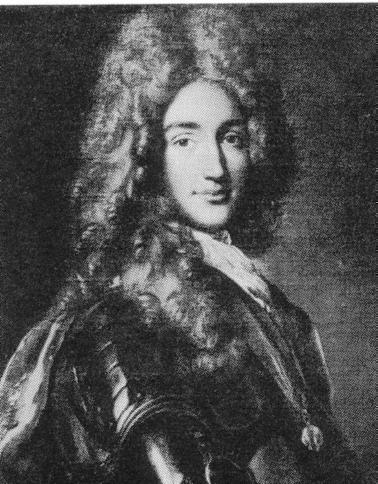What is erroneously referred to in English history as the Desmond Rebellions occurred in (first) 1569-1573 and (second) 1579-1583 in
Unwilling or unable to pronounce the correct name of the area – ‘Deasmumhain’, or ‘
The provinces of
Had these houses and their leaders – with other Old English and Irish – acted in concert, they might well have survived the onslaught to come but, if anything, they were more antagonistic to one another than to the English authorities who wished to suppress them. As often, the English exploited this internecine antipathy.
As we have learned already in relation to Bagenal in the North, the English planned to replace local leaders with provincial presidents (military governors, in effect) and it was in pursuit of this planned policy that Lord Deputy Sidney undertook to confront the Geraldines (the Fitzgerald leaders of Munster) and the Ormondes (Butlers).
The ‘rebellions’ were primarily about the independence of lords from their monarch but as they progressed they had an increasingly important element of religious conflict. This contributed to the heightened brutality of the subsequent repression. The result of the rebellions was the destruction of the Desmond dynasty and the subsequent plantation of
The local dynasties saw the presidencies as intrusions into their sphere of influence and into their traditional violent competition with each other. This had seen the
Queen Elizabeth summoned the heads of both houses to
This removed the natural leadership of the Munster Geraldines and left the Desmond Earldom in the hands of a soldier, James Maurice Fitzgerald, the “captain general” of the Desmond military. Fitzmaurice perceived no role for himself in the proposed new order in
A factor that drew wider support for Fitzmaurice was the prospect of land confiscations, which had been mooted by Sidney and Peter Carew, an English colonist. This ensured Fitzmaurice the support of important clans, notably MacCarthy Mor, O’Sullivan Beare and O’Keefe and, indeed two prominent
Fitzmaurice himself had lost the land he had held at Kerricurrihy in
Fitzmaurice however had wider aims than simply the recovery of Fitzgerald supremacy. Before the rebellion, he secretly sent Maurice MacGibbon Catholic Archbishop of Cashel to seek military aid from King Philip II of
Fitzmaurice launched his insurrection in June 1569 by attacking the English colony at Kerrycurihy before attacking
In response,
Together, Ormonde, Sidney and Humphery Gilbert, appointed as governor of
As individual lords felt compelled to retire to defend their own territories under this onslaught, Fitzmaurice’s forces broke up. Gilbert in particular was notorious for the terror tactics he employed, killing civilians at random and setting up a corridor of severed heads at the entrance to his camps.
In late 1569 a similar but shorter insurrection broke out in
In February 1571, John Perrot was made Lord President of
Fitzmaurice finally submitted on February 23, 1573, having negotiated a pardon for his life. However in 1574, he again became landless and in 1575 he sailed to
Gerald Fitzgerald, Earl of Desmond, and his brother John were released from prison to stabilise the situation and to reconstruct their shattered territory. Under a new settlement imposed after the rebellion, known as “composition”, the Desmond’s military forces were limited by law to just 20 horsemen and their tenants made to pay rent to them rather supply military service or to quarter their soldiers.
Perhaps the biggest winner of the first Desmond Rebellion was the Earl of Ormonde, who established himself as loyal to the English Crown and as the most powerful lord in the south of
Although all of the local chiefs had submitted by the end of the rebellion, the methods used to suppress it provoked long-lasting resentment, especially among the Irish mercenaries, gall oglaigh or “gallowglass” as the English termed them, who had rallied to Fitzmaurice.
William Drury, the new Lord President of
Fitzmaurice had deliberately emphasized the Gaelic character of the rebellion, wearing the Irish dress, speaking only Irish and referring to himself as the captain (taoiseach) of the Geraldines.
Finally, Irish landowners continued to be threatened by the arrival of English colonists. All of these factors meant that, when Fitzmaurice returned from continental Europe to start a new rebellion, there were plenty of discontented people in
The second Desmond rebellion was sparked when James Fitzmaurice Fitzgerald launched an invasion of
Fitzmaurice landed at Smerwick, near Dingle on July 18, 1579 with a small force of Spanish and Italian troops. He was joined in rebellion on August 1 by John of Desmond, a brother of the Earl, who had a large following among his kinsmen and the disaffected swordsmen of
Gerald, the Earl of Desmond, initially resisted the call of the rebels and tried to remain neutral but joined in once the authorities proclaimed him a traitor. The Earl joined the rebellion by sacking the towns of Youghal (on November 13) and Kinsale, and devastated the country of the English and their allies.
However by the summer of 1580 English troops under William Pelham and locally raised Irish forces under the Earl of Ormonde succeeded in bringing the rebellion under control, re-taking the south coast, destroying the lands of the Desmonds and their allies in the process, and killing their tenants. By capturing Carrigafoyle at Easter 1580, the principal Desmond castle at the mouth of Shannon river, they cut off the Geraldine forces from the rest of the country and prevented a landing of foreign troops into the main
However, in July 1580, the rebellion spread to
